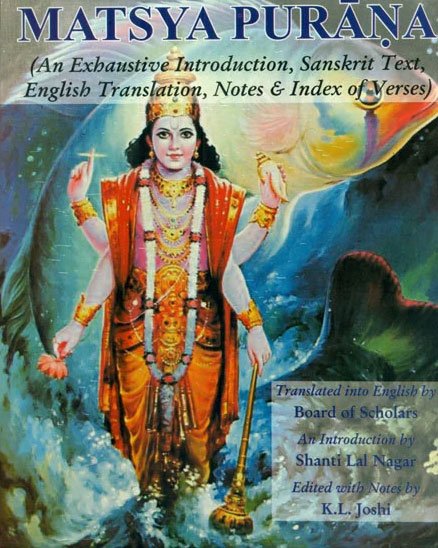The Matsya Purana (critical study)
by Kushal Kalita | 2018 | 74,766 words | ISBN-13: 9788171103058
This page relates ‘Plotical Aspects in the Puranas (Introduction)’ of the English study on the Matsya-purana: a Sanskrit text preserving ancient Indian traditions and legends written in over 14,000 metrical verses. In this study, the background and content of the Matsyapurana is outlined against the cultural history of ancient India in terms of religion, politics, geography and architectural aspects. It shows how the encyclopedic character causes the text to deal with almost all the aspects of human civilization.
Plotical Aspects in the Purāṇas (Introduction)
The term polity denotes an area with a government and it may be a state, a province or a city. The Purāṇas have supplied abundant information regarding the culture and history of ancient India be it the political scenario, religious or philosophical beliefs, geographical data or historical aspects. It is believed that the Purāṇas, major or minor are useful for the systematic study of India’s age-old history.
Regarding the political thought and administrative institution prevalent in ancient India some major Purāṇas have supplied ample evidences. Viṣṇu, Mārkaṇḍeya, Agni, Matsya, Vāyu, Padma, Varāha, Kūrma, Bhāgavata, Garuḍa, Kālikā, Viṣṇudharmottara, Brahmāṇḍa, Bhaviṣya, Liṅga, Nāradīya, Āditya are the names of the Purāṇas which more or less carry references of polity of ancient India. The Matsyapurāṇa has dealt with several aspects of polity common in those days the study of which may open new dimensions for this subject. But at the same time questions are raised and discussed too regarding the authenticity of the data related to the science of governance found in this Purāṇa or its indebtedness to the Arthaśāstra.[1]
An endeavor has been made in this chapter to throw light on different aspects of the topic polity as dealt with in the Matsyapurāṇa highlighting the origin of kingship, the seven limbs of the state, king and his duty, his council of ministers and law and order of the state.
Footnotes and references:
[1]:
V.R.Ramachandra Dikshitar, The Matsya Purana-A Study, p. 75
